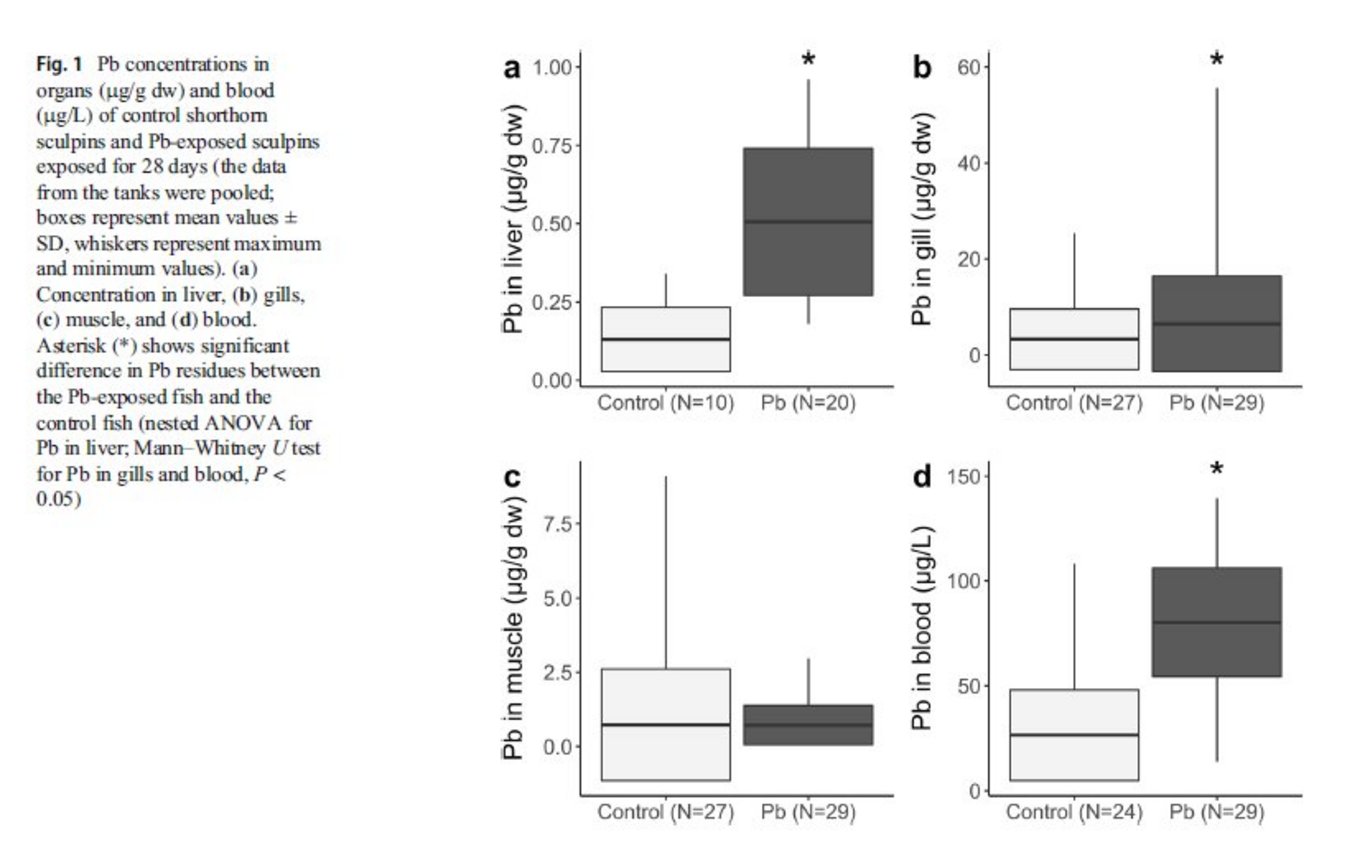Histopathological effects of short-term aqueous exposure to environmentally relevant concentration of lead (Pb) in shorthorn sculpin (Myoxocephalus scorpius) under laboratory conditions
New publication by Khattapan Jantawongsri, Rasmus Dyrmose Nørregaard, Lis Bach et al.

Abstract:
Shorthorn sculpin (Myoxocephalus scorpius) has been used as a sentinel species for environmental monitoring, including heavy metal contamination from mining activities. Former lead–zinc (Pb–Zn) mines in Greenland resulted in elevated concentrations of metals, especially Pb, in marine biota. However, the potential accumulation of Pb and effects of the presence of Pb residues in fish on health of sculpins observed in the field have not been validated in laboratory experiments. Therefore, our aim was to validate field observation of shorthorn sculpin via controlled laboratory exposure to environmentally relevant concentrations of dissolved
Pb. We evaluated the effects of a short-term (28 days) exposure to Pb on Pb residues in sculpin blood, gills, liver, and muscle and the morphology of gills and liver. The highest level of Pb was found in the gills, followed by muscle and then liver. Pb levels in liver, gills, and blood of Pb-exposed sculpins were significantly higher than those in control fish, showing that blood is suitable for assessing Pb accumulation and exposure in sculpins. Histopathological investigations showed that the severity score of liver necrosis and gill telangiectasia of Pb-exposed sculpins was significantly greater than in control fish. The number of mucous cells in gills was positively correlated with Pb concentrations in organs. Overall, the results validated field observation for the effects of Pb on wild sculpin and contributed to the improved use of the shorthorn sculpin as sentinel species for monitoring contamination from Pb mines in the Arctic.
https://doi.org/10.1007/s11356-021-14972-6
